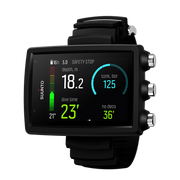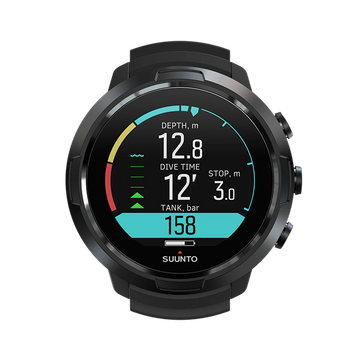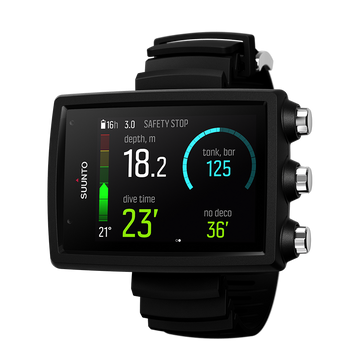

Suunto Blog
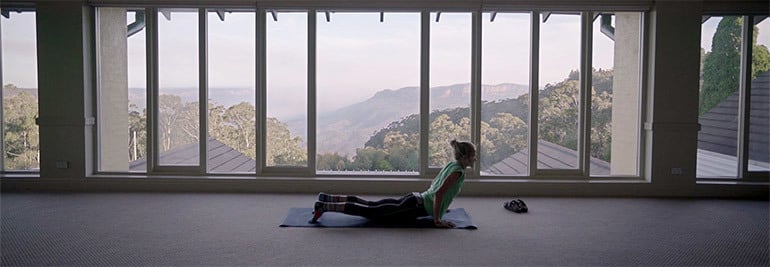
Reaching the start line of her dreams
What's been happening?
I have been in Auburn, California the last four weeks preparing for the 100-mile Western States Endurance Run (WS). I came early to see what the trail holds, and to get used to temperature and altitude. I’ve adjusted well. I really eased into, and then moved to run in the hottest part of the day. It’s about 35 degrees celcius, and hotter still in the canyons. I’ve been lucky that over the last few years I’ve chased the sun, and haven’t had a winter. I’m feeling good!
What’s been new for you there?
The WS trail is super unique because of its downhill nature. I’ve never run a trail with so much grinding downhill. It sounds good, but after a while you’re searching for a hill. The quads feel it!
Western States is quite special for you, right?
Absolutely, because I’ve wanted to run it forever since I was 15. It was the first race I ever heard of, and I’ve been trying to get to the start line for three years. My aim for the race is to give my best; it’s an honor just having a bib. To complete my first 100 miles is a big thing – it’s a really long way. The people I get to stand on a start line with are amazing. I was their fangirl when I was a teenager. Now they are giving me advice, which says a lot about the camaraderie in our sport.
What's in your diary this summer and what's the main focus?
WS is the main focus. I’ve left the back half of the year open. WS is my first 100-mile event, and I’m not sure how I will feel physically, mentally, emotionally after it. I’ll play it by ear. I have respect for what WS will take from me. I’m heading to the Ultra Trail Mont Blanc in France, just to be there. I’ll spend some time traveling in Europe.
What are you most excited about?
I’m excited to head to the Sky Running World Championships in Scotland at the start of September. I’ll be there as a supporter or a competitor – we’ll see. It’s my first time visiting Scotland. It would be nice if there was sunshine on race day! But I think I’m dreaming.
Favorite post-training meal at the moment?
I am plant-based, vegan. I use that to my advantage – I get to eat a lot! The foods I choose are plants and fruits so the quantity I have to eat is quite big and that pleases me. I love making green smoothies, or commonly known as “Shrek Poo” – lots of green vegetables blended with frozen bananas, and Amazonia vegan protein powder. It has a thick consistency. I top it with nuts and fruit. Delicious!
Anything else inspiring you at the moment?
I practice yoga, more for the mental benefits than the physical. When I run, because I’m so efficient, I drift off and think about other things. With yoga, I fully concentrate and listen to my body. It’s really intuitive. I’m living a simple life: run, eat, sleep, yoga, repeat. To be honest, I’m pretty happy with it.
VIDEO: Follow along Lucy for a day as she prepares for the Western States Endurance Run!
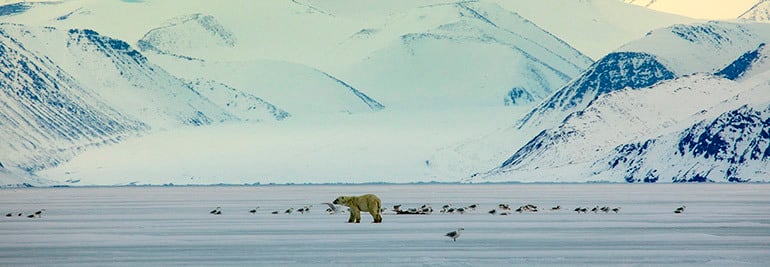
Winning awards and making movies: just another year in the life of Jill Heinerth
If Jill Heinerth didn’t spend so much time underwater, we’d be a little more comfortable making this statement: the Canadian-American explorer is so darn busy, she barely has time to breathe. Between her expeditions, documentary filming, and you know, winning lifetime achievement awards, it’s a little tough to find a free moment – but unsurprisingly for those who know her, Jill was happy to fill us in. (And don’t worry – she’s got plenty of time to breathe.)
First, the awards. What did you win?
At the TekDiveUSA biennial conference, I was surprised with the Lifetime Achievement Award from the technical diving industry. In a fun tradition, they run a cave diving line into the audience to surprise the recipient. I was then blindfolded and had to follow the safety line to the stage while a show about my life was playing for the crowd.
It came with a trophy… and quite the compliment.
The award was a perfect little action figure of me in my diving and camera gear that was made by an artist in Poland. The citation read, “For a lifetime of consistent contribution and discovery that has opened up the field of technical diving.” But what really humbled me was that I was described as "our generation's Cousteau."
I still feel quite speechless. I am the first woman to be recognized for the honor.
Congratulations! On to the future. Where are you going to be this summer?
Filming in the Arctic, filming with French-Canadian filmmaker Mario Cyr. We’re working on a film documenting climate change, dramatic changes in the sea ice. We'll be working with local Inuit elders to hear about their observations and adaptations. We’ll be in Arctic Bay, Repulse Bay and Greenland.
You’re in a hurry.
The climate in the Arctic is changing twice as fast as anywhere else on earth. The sea ice sets up later and breaks up earlier each year. In fact, we had to move up our filming by a month due to the receding ice. Our climate change doc is being thwarted by climate change! Our Inuit hosts called us and recommended that we hurry north as soon as possible due to unprecedented break up this year.
So basically: ice is melting way to fast.
If we lose Arctic sea ice, we lose an important regulating function on global temperature. The white ice reflects the sun's rays back into the atmosphere. The darker open sea, absorbs heat, further increasing the feedback loop that rises ocean temperatures and ultimates affects the global circulation of water currents. Furthermore, both the people of the north and the wildlife rely on sea ice. The Inuit call the sea ice, "the land" since it represents their hunting ground and their ability to travel to other places. The wildlife also hunt on "the land.”
This is a big problem!
The entire food web of the Arctic relies on sea ice. From the algae beneath its surface that feed the zooplankton to the polar bears that roam in search of seals, all organisms use the ice as a part of sustaining their feeding activities.
To learn more about Jill’s Into the Arctic on the Edge film project, check out the website – and be sure to check out the teaser for her film below.
WATCH ARCTIC ON THE EDGE
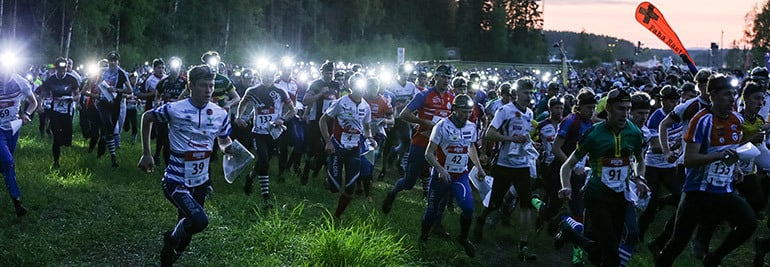
Mårten Boström's essential tips for Jukola terrain
Jukola Relay, the largest orienteering event in the world, is just around the corner. Mid-June close to 20 thousand athletes will face some unique, challenging terrain in Southern-Finland. We turned to former sprint world champion Mårten Boström for some advice. Read on to learn more.
The 70th edition of Jukola Relay and the 41st Venla Relay will take the orienteers to Lahti and Hollola in Päijät-Häme Region about an hour north of Helsinki, Finland. The competition area is quite peculiar, as it is dominated by depression terrain formed by the Ice-Age. These depressions make navigating hard; the hollows are not as easy to see in the terrain as hills and rises would be. One also has to read the map carefully; are the contour lines up or down?
“Most of the features we use for navigation are below the main running level, not above as we're used to,” says Mårten Boström.
The depressions vary in size, some are small, some go down as much as 40 meters. Most of the terrain is pine forest with good runnability. There are also a lot of existing trails.
To get an idea of how the maps will look, check this out
“You should not plan on running through all depressions. If there's yellow on the bottom it might be a good idea to run along a depression's bottom, but otherwise, I'd suggest using the ridges between the depressions. Most animal trails and runner's tracks will also be going along the ridges, where you'll be avoiding the excess climb.”
Smart use of compass use is crucial in this year's Jukola.
“Most features you'll use for navigation are contours with soft edges, so it's hard to get your 100% specified location. When going through depressions (be sure you will no matter how well route choices you make) you need to be careful to exit in the correct angle,” says Mårten.
Main image by Kimmo Hirvonen / Lahti-Hollola Jukola, other images by Petri Kovalainen / Suunto
READ MORE
THREE REASONS TO USE A THUMB COMPASS
HOW TO USE SUUNTO AIM-6 THUMB COMPASS
LEARN MORE ABOUT SUUNTO AIM-6

Three reasons to use a thumb compass
The key benefit of a thumb compass over a traditional baseplate compass can be summed to one sentence: It is faster. But what exactly makes an orienteer with a thumb compass go faster?
You can run faster
When using a thumb compass you hold the map and the compass in the same hand. This enables you to keep running while reading the map. “Using both hands for map work turns your running into penguin walk,” says Mårten.
You don't need to place the compass on the map again and again
No more holding your finger on the map to mark your current location and no more need to place the compass back on the map. The compass is already there and pointing to where you want to go.
“A lot of times people are taught to place their thumb on the map where they are. However, I find it more useful to know where I am going and thus want to know what is the next spot where I can get solid confirmation on my location.”
You can take a new direction quicker
There is no need to turn the compass capsule on the AIM-6 thumb compass. Simply see which sector on the compass capsule corresponds with your new direction and go. “I usually memorize the color first and then the shape. But you can create your own system for remembering the correct sector.”
All images: Petri Kovalainen / Suunto
READ MORE
LEARN MORE ABOUT SUUNTO AIM-6 THUMB COMPASS
HOW TO USE SUUNTO AIM-6 THUMB COMPASS
DEVELOPING A NEW ORIENTEERING COMPASS IS A TEAM EFFORT

What you absolutely, positively, must bring and do on your first dive holiday
Packing for vacation should be easy – a couple swimsuits, a pair of flip-flops, some sunscreen, and you’re good to go – right? Not if you’re going diving. To say it’s an equipment-intensive sport is putting it lightly. Good news: you can get your tanks at almost any dive location – so at least you won’t have to put down for overweight baggage fees. But there are a few key items you’re probably going to want. Suunto’s Alec Jones has spent the good part of a decade at the dive paradise of Sharm-El-Sheik as a dive instructor – so he’s a qualified expert.
First off, do a holiday
A dive holiday may sound extravagant, or expensive – but it’s one of the best ways to expand your horizons. “You’ll encounter different conditions, visibility, wildlife – you name it. Diving is about exploration!” says Alec.
Your own fins, mask and snorkel
Fins and masks are pressure points – you get the wrong fit, and you’re going to be uncomfortable all day, and that makes diving less than fun. At that point you might as well chuck in a snorkel. “Rental kit often isn’t so nice,” says Alec. “Even if you’re just getting into it, I really recommend getting a decent, properly fitting mask, and some decent fins.” And if you’re someone who would call themselves a germaphobe, you might, uh, want your own wetsuit, too.
Dry Bags, sunscreen and hydration
You’re probably going to be spending a lot – a lot – of time on a boat in the sun. Sunscreen you know about – but what you might not realize is how much you’ll get dehydrated. Add in that a lot of other counties purify their water – you won’t be getting minerals you’re used to – and it’s a recipe for dehydration. “A lot of people would come to dive in Egypt, get sick, and blame something in the water – but it’s actually dehydration!” says Jones.
Another great thing to bring along? Small or medium-sized dry bags to drag out on the boat – useful for electronics or just keeping a dry t-shirt nearby.
Gaffer tape and zip ties
Why? You don’t know yet. Just bring ‘em.
A dive computer you know
Your dive computer is an essential piece of kit – and since it’s a little complicated, it’s great to go with something you know. The new Suunto EON Core is an easy-to-use, Bluetooth®-equipped dive computer that will log every meter of every dive. With your own kit, you can pre-load it with your own dive plan – a nice bonus. Another hot tip? A portable power bank to keep your dive computer charged.
Keep going further
Water covers over 70% of our planet – there are lots of places to go. “For Europeans, the Red Sea is really close,” Jones says. “But why stop there? There’s Indonesia, the Philippines, Malaysia, the Cenotes in Mexico, the Florida Keys, Costa Rica, the Galapagos – the list is really endless!”
Do everything right, and you’ll have the experience of a lifetime – and you might even make some new friends. “I’ve seen a lot of solo divers come down and make friends that they’ll keep for life,” says Alec. “Now they come back year after year to dive together.”
READ ALSO
A pro diver’s essential tips for newbie divers
10 tips to take amazing underwater photos
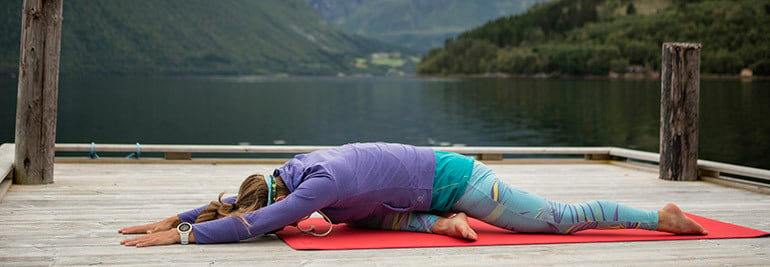
Emelie Forsberg's top 7 yoga poses for runners
There is no better way to start the day than by doing yoga. For champion mountain runner Emelie Forsberg, a regular morning yoga practice keeps her life in a balance.
A lot of people have the impression yoga takes an hour or 90 minutes. Not so – Emelie says a regular yoga practice can be short and sweet. A daily practice of 10 to 15 minutes is better than a once-in-a-while 90-minute class. Regular practice brings the results, she says.
Here are her 7 favorite poses. These can be done in a sequence in less than 20 minutes.
Easy seated: One to three minutes
"It’s nice to sit for a few moments before beginning moving just to feel the breath and the body. Simply cross your legs in front of you, and tune into your belly moving in and out with the breath."
Downward Dog: Five to 20 breaths
"I often come into this position even if I don´t do the sun salutations because it’s great for the hamstrings, calf muscles, and the upper back. It also works as a stretch for tight underarms."
"It’s like creating the shape of the letter “A” with the body. Spread the fingers wide, actively push into the hands, breath in and lift your butt up high. Try to distribute weight down evenly through the arms and legs."
Warrior 2: Five to 10 breaths each side
"This pose is great for developing strength in the legs and finding stability by keeping the hips in a balanced position. Align your feet so the front foot’s heel is in line with the arch of the back foot. Keeps the arms out at shoulder height and gaze out over the front fingers. For a more demanding session I hold it for 10 breaths on each side. Keep the front knee above the ankle, the back leg straight and the torso upright."
Click here to read how yoga helps Emily’s life stay in balance
Triangle pose: Five to 10 breaths each side
"Nice stretch for the hamstrings and side body, and also works on balance."
Tree pose: Five breaths each side
"Here we test our balance, using the small muscles in the ankle and foot. Try also to keep a stable and long upper body, as well as ensuring relaxed shoulder blades while holding your arms above your head."
Boat pose: Five to 10 breaths
"Great for working on core strength. Sit on your butt, with the soles of your feet on the mat and your knees up. Sit upright, keeping your spine long. Then lift your feet off the mat, bringing them to knee height, while pointing the toes. Now, lean back carefully, keeping the spine long, and bring your arms forward so the hands are by the knees."
Pigeon pose: Three to 10 breaths
"Great for the glutes! If you’re feeling tired in the IT band, then this pose can really help. Stay here as long as comfortable and work with the breath to slowly (and carefully!) come lower down for deeper work. Be aware of any uncomfortable or painful compression sensations. It’s better to back off and approach this posture gradually over time."
All images by Matti Bernitz / Suunto
More related stories:
How yoga can make you a better mountain runner
How to bring mindfulness to the trail
Five yoga moves for runners








